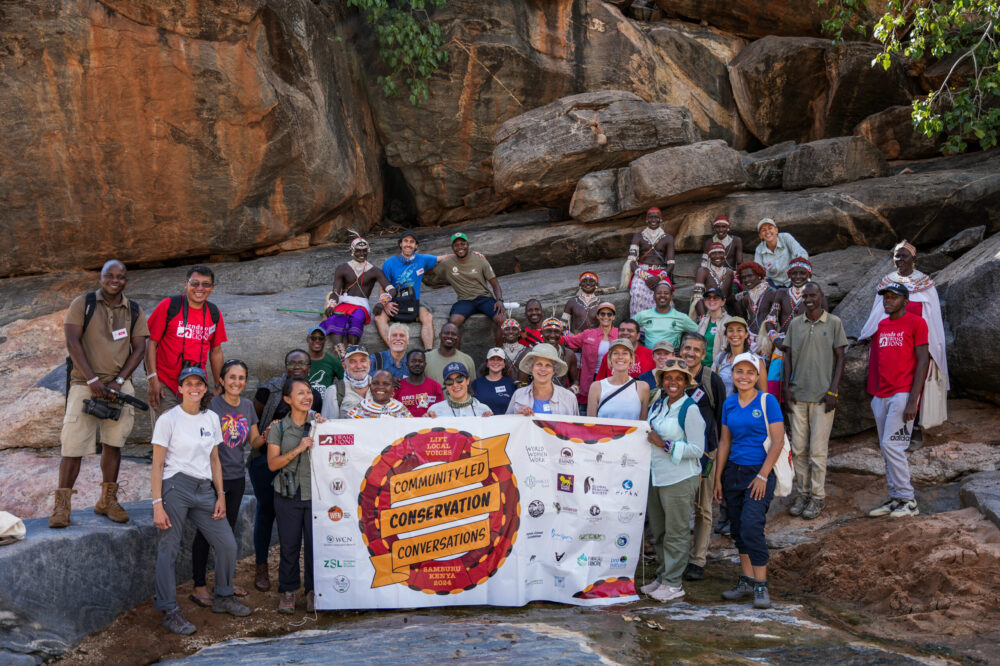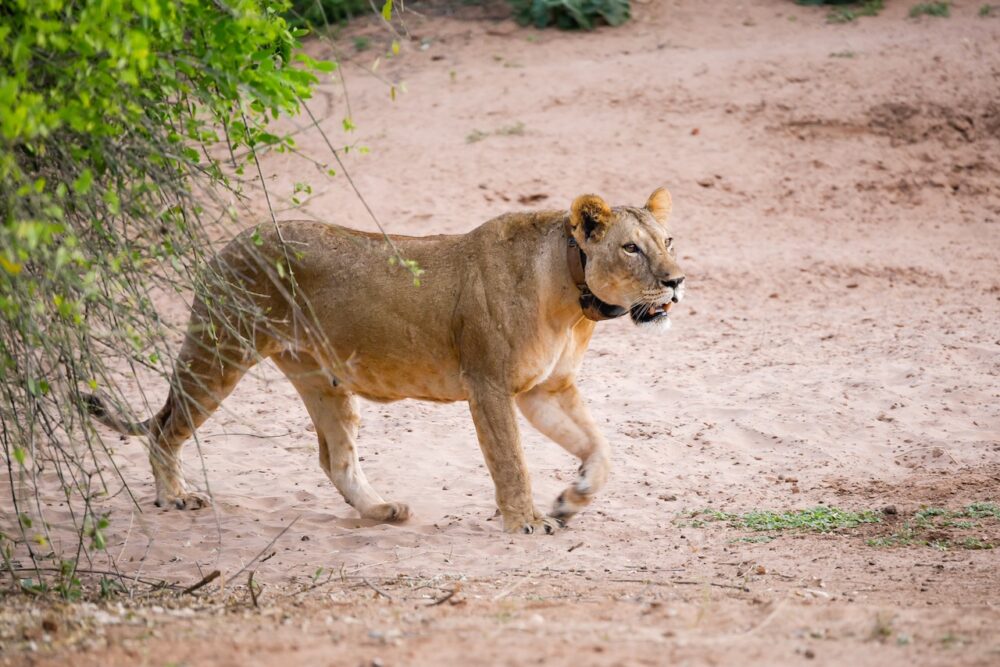I was thrilled to have Nina Fascione and her husband Steve Kendrot come and stay with us at the Ewaso Lions camp a while back. Nina is the Vice President for Field Conservation for Defenders of Wildlife and a renowned human-wildlife conflict expert. Today we have a special guest blog written by Nina!
After looking for her intently for so long that my eyes strained, I wasn’t actually expecting to see her when we did come upon her. Lekuraiyo, standing next to me with our heads sticking out of the top of the jeep (his head sticking out much farther than mine!), gently tapped me on the shoulder and said “lion.” And there she was, standing partially hidden in the brush and still as a statue, staring at us without moving a muscle, the better to remain unseen. In my excitement, I leaned down, punched Shivani on the arm and hissed “lion!” Shivani was thrilled to see Magilani, the lioness she had been monitoring for several weeks, but not as much as I was, as this was my first wild lion. Indeed, it was my first trip to Africa. Despite having worked with animals and in the conservation world since 1980, I had never before made this journey to the epitome of wildlife meccas. My husband Steve, also a wildlife biologist, and I traveled to Northern Kenya to visit Shivani and learn more about her work.
Nina with Francis (Ewaso Lions Scout) and Lekuraiyo (Ewaso Lions tracker) standing in Gypsy
I met Shivani when she became a student in the Emerging Wildlife Conservation Leaders (EWCL) class, a leadership training programme that I co-founded and teach.
Shivani’s large carnivore conservation resonated with me because it parallels the work I oversee in North America as vice-president for field conservation for Defenders of Wildlife. Defenders has successfully worked to restore wolves, grizzly bears and other endangered species to parts of the United States, and the challenges we encounter while doing so are similar to the challenges Shivani faces in her work studying and protecting lions in Kenya: primarily, conflict with humans, including direct conflict as well as human-caused habitat loss and fragmentation.
Conflicts between humans and wildlife can seem like overwhelming obstacles to successful conservation programmes. In the United States, some ranchers and hunters object to the restoration of large carnivores, as they view them as a threat to their livelihoods. Defenders has helped ameliorate these conflicts through several successful programmes, such as our livestock compensation trust, in which we reimburse ranchers for verified livestock losses to wolves and grizzly bears.
We also maintain a proactive programme, through which we work with ranchers to take steps to prevent livestock losses. Defenders will fund the purchase and implementation of tools to keep wolves and bears away from livestock. These methods include livestock guarding dogs, fencing, employing range riders to monitor livestock and so on.
These programmes have gone a long way in preventing conflicts, as well as reducing the animosity some local residents feel toward large carnivores and, presumably, the legal or illegal killing of carnivores. Through the Ewaso Lion project, Shivani is similarly working with local people – the Samburu – to understand the causes of and find solutions to prevent conflict and animosity towards predators and other wildlife in Kenya. For example, Shivani is working with local villages to ensure that bomas, the pens made out of brush where the livestock are housed at night, are strong enough to deter predators.
Biological studies are increasingly demonstrating that predators are essential to a healthy ecosystem. In addition, they bring vital economic benefits to regions through ecotourism. And perhaps most importantly, carnivores provide us with deep-rooted cultural and aesthetic values. Whether working to protect wolves in Yellowstone National Park in the United States or lions in the Samburu ecosystem in Kenya, we should all care about their conservation.





